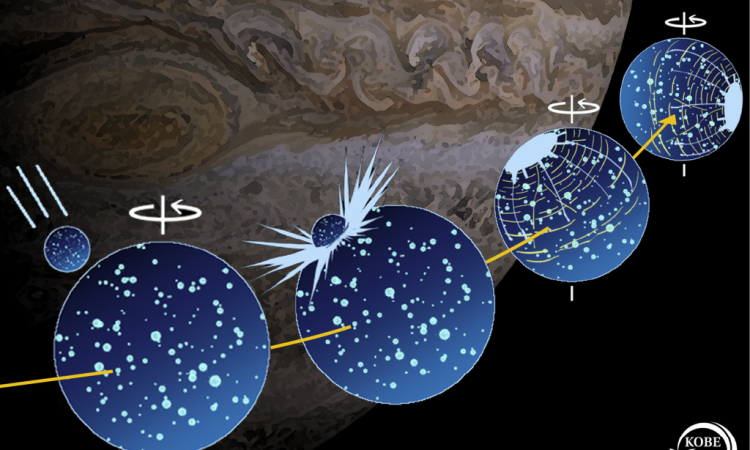
The asteroid that struck Ganymede, one of Jupiter’s major moons, was 20 times larger than the one that extinguished the dinosaurs.
About 4 billion years ago, an asteroid hit Ganymede, one of Jupiter’s major moons. Now, a researcher from Kobe University has discovered that the axis of this moon (the largest in the solar system) has shifted due to the impact. The asteroid was about 20 times larger than the one that ended up on Earth and caused one of the largest impacts with noticeable signatures in the solar system.
Advertisement
The characteristics of Ganymede
Ganymede is the largest moon, larger even than the planet Mercury, and is also interesting for the oceans of liquid water that could hide beneath its icy surface. Like our Moon, it is tidally locked. This means that it always shows the same side to the planet it orbits and therefore also has a hidden side. Over much of its surface, it is covered in grooves that form concentric circles around a specific point, which led researchers to conclude that they were the result of a giant impact.
“We know this feature was created by an asteroid impact about 4 billion years ago, but we weren’t sure how large it was and what effect it had on the moon.”explained Kobe University planetary scientist Hirata Naoyuki.
What we know about the asteroid that hit Ganymede
Data on the object was scarce, Hirata was the first to realize that the supposed impact location is almost exactly on the meridian farthest from Jupiter. Drawing on similarities to an impact event that caused the dwarf planet’s rotation axis to shift, this implied that Ganymede had also undergone such a re-orientation. Hirata is a specialist in simulating impact events on moons and asteroids, so this realization allowed him to calculate what type of impact could have caused this reorientation.
An asteroid 20 times larger than the one that extinguished the dinosaurs
The asteroid was probably about 300 kilometers in diameter, about 20 times larger than the one that hit Earth 65 million years ago and ended the age of the dinosaurs. And that created a crater transient with a diameter between 1,400 and 1,600 kilometers. Widely used and computational transient craters are the cavities produced directly after the crater is excavated and before material is deposited in and around the crater. According to his simulations, only an impact of this size would make it plausible to shift the moon’s rotation axis to its current position. This result is valid regardless of where on the surface the impact occurred.
Read more

